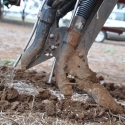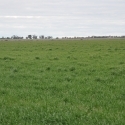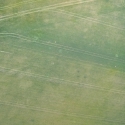Balancing Nutrients for 2010
Balancing Nutrients for 2010
There are several tools that growers and advisors can use to help make decisions on fertilizer management for the coming season. Nutrient budgets, coupled with soil tests, are a good starting point. Soil tests give a starting point and the budgets tell us the trends in demand and supply. Nutrient budgets should account of all nutrients bought onto the paddock through fertilizer, N fixation by legumes, animal feeds or manures. The main loss of nutrients is through products harvested in crops or animals, but losses can also occur through soil erosion and leaching.
For most cropping situations a nutrient budget requires an estimate of crop yield potential. This can be done using yield forecasting tools such as Yield Prophet® or by a simple water use efficiency calculation. Table 1 gives examples of nutrient removal for some activities. From this table it can be seen that S requirement for canola is much higher than most grain crops and hay crops such as wheaten hay remove a lot of K. Budgets should be drawn up with these removals in mind.
Table 1 Estimate nutrient removals for a range of crops. Values derived from Reuter and Robinson (1997), Plant Analysis: An Interpretation Manual, CSIRO Publishing, Collingwood.
| Crop
at harvested moisture contents | Yield target (t/ha) | Removal rate (kg/ha) | |||
N | P | K | S | ||
| Wheat (grain) | 3.5 | 77 | 12 | 14 | 5 |
| Field Pea | 2.5 | 88 | 10 | 21 | 5 |
| Canola | 2.5 | 77 | 18 | 13 | 13 |
| Wheat (Hay) | 4.0 | 80 | 8 | 48 | 6 |
Using an estimate of removal, starter N should aim to fill the gap between available soil N at sowing and the estimated mineralized N during the season. Under normal circumstances, the agronomic efficiency of N delivered from fertilizers is around 50%, with the excess N applied either remaining in the soil, in crop residues or lost. Losses can occur through leaching, denitrification and volatilization on different soil types and under different conditions.
Phosphorus is a little more difficult to estimate using just removal because soils vary in the amount of available P removed by fixing it in forms less available to the crop. Soils with a high Phosphorus Buffering Index (PBI) need more P applied to change the amount of available P. For example, a soil with a PBI of 100 will need 8 kg P to raise the soil test 1 mg/kg (Olsen), while if the PBI is 500 it would take around 13 kg P to raise the soil test the same amount. Research shows that in some soils as little as 15% of the applied P is taken up by the crop, with the balance coming from less available pools.
Despite that apparent low efficiency, recent research reported in IPNI’s Better Crops by Johnny Johnston and Keith Syers suggests that when efficiency is measured by the “Balance Method” – P removed in crop expressed as a percentage of P applied – and when soil P levels are being maintained near the critical level, the efficiency of fertilizer P use frequently exceeds 90%.
Similar evidence that P strategy should be considered in the long term comes from the Incitec Pivot Long Term Fertilizer experiment at Dahlen. At that site, a range of N and P rates have been applied to a crop rotation over 14 years and the application of 9 kg P per crop year maintained soil test values at around 33 mg/kg (Colwell P). More to the point, this rate of P application was approximately in balance with the amount of P removed in the crops over that period.
While nutrient balances are useful, if fertilizer application rates are calculated to only replace the harvested nutrients, you may not be adding the correct amount of fertilizer. If the soil nutrient concentrations are in the low or medium range, merely adding sufficient fertilizer to replace the quantity of nutrients removed in the harvested crop may result in depressed yields. If soil analysis reveals nutrient concentrations in the high and very high range, it may be possible to trim your application rate. So soil testing is important to know what the stores of available nutrients are
Summary
Many nutrient plans call for maintenance applications, where annual additions of replacement nutrients are recommended. Yield estimates and removals are a good starting point for estimating fertilizer plans, but soil tests are needed to indicate the amount available at sowing.
For further information see: Johnston and Syers Better Crops Article
Also download a table of approximate nutrient removals for southern Australian cropping systems.




